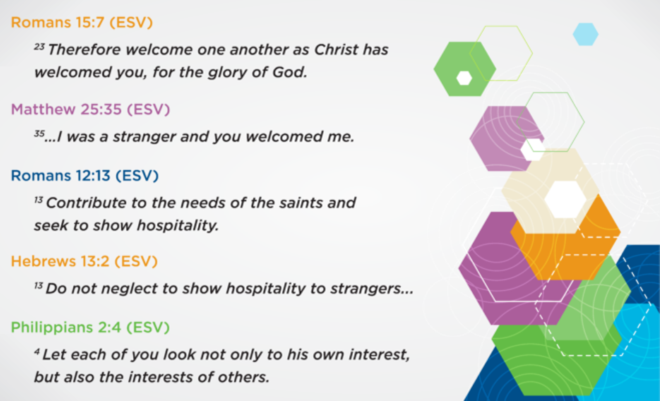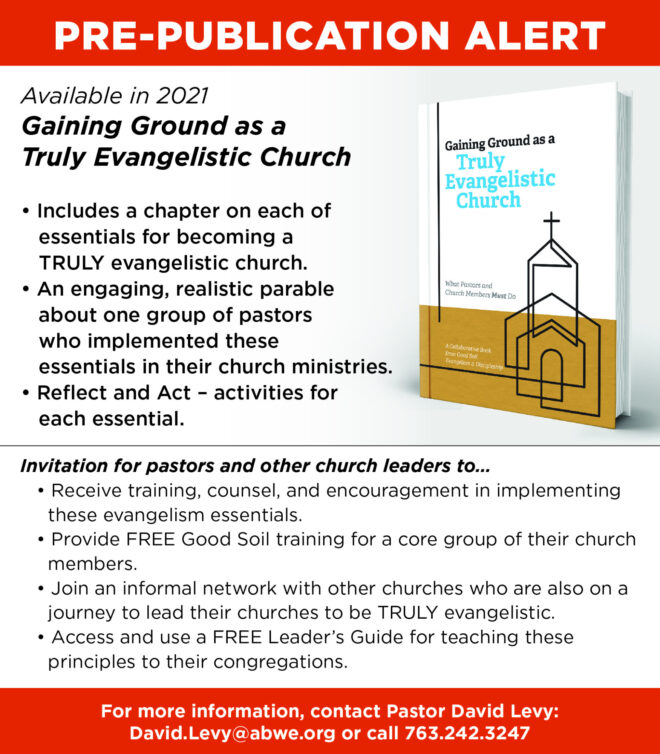Congregational Warmth: Developing a Culture of Authentic Hospitality 5th Essential for a TRULY Evangelistic Church

A church that doesn’t warmly “embrace” its visitors can’t be TRULY evangelistic.
“Alien tissue rejection”— I first learned about the tendency for the human body to reject a transplanted organ when one of my best friends had a heart transplant several years ago. The body recognizes the transplanted tissue as foreign and persistently mounts an immune response to reject it.
Many congregations respond in a similar way to visitors, to varying degrees. But a church that doesn’t warmly “embrace” its visitors – can’t be TRULY evangelistic. In this chapter you will learn about “Five Congregational Temperatures” and how to set your church’s “thermostat” at the best setting to make new attenders feel at home and want to come back.
You have probably experienced some, if not all, of these “Five Congregational Temperatures.” As I was working on this graph, specific churches that I have visited over the years spontaneously came to my mind. Try to think of your church, from a visitor’s perspective.

How to Adjust Your Congregation’s Thermostat to “Warm”
This will not be easy for many churches. Think of the office or home where there is someone who is more comfortable with the thermostat setting at 66 than 72. Then there are others who complain with any setting under 78.
In a similar way, church congregations consist of members with differing preferences for visitor-warmth. Some of them, by personality or by personal conviction, really want to make visitors feel right at home. Other members are perfectly fine with a congregational climate that freezes out outsiders. Adjustments to “visitor-warm” will require teaching, training, and time. But the results will be worth the efforts.
Prepare.
First, take a look at your facilities, inside and out, and think how welcome you would feel if you were a visitor, perhaps an unchurched person, visiting your church for the first time. Are there convenient parking spaces reserved for visitors? Is the entrance clearly marked and easy to find?
Then when you enter the building, would you know where to go? Nursery? Restrooms? Worship Center? Where would you find information about this church?
Second, think about the congregation—how warmly would the members of your church receive you if you were a complete stranger, maybe from an ethnic minority not commonly represented in your congregation? Or what if your appearance was not traditionally “church-like”?
There are some churches for which congregational warmth is not a problem, because of the personalities of the members and spiritual sensitivity to the needs of people who visit. But many church members need to be taught and trained to practice what the New Testament teaches about Christian hospitality—hospitality that places the visitor’s feelings and needs above ours.

I can’t say it any better than this:
—Harold Percy
Invite.
As your congregational temperature nears or reaches the “warmth” level, church members will feel more at ease inviting friends. And it’s a good idea to plan a few “Red Carpet” programs or activities each year that are “easy-to-invite-to” events—concerts, seasonal programs, fun nights, etc.
But setting your church’s thermostat is not only about making visitors feel at home, it is crucial in helping new believers assimilate into the congregational fellowship of your church. It’s a key step in first steps follow-up, what we think of as basic discipleship.
Embrace.
By “embrace,” I don’t mean hugging. That would freak me and many others out! But everyone needs to feel embraced, in whatever way is most comfortable and safe for him or her. Here’s where your church members will need to be taught and trained.
Teach them how to “read” a new attender’s comfort with personal attention and how to respond accordingly.
- Some shy visitors will be most happy with very little attention. Be friendly and warm but give them space.
- Some visitors will expect and desire to be engaged in friendly conversation, but will not want to go too deep, too quickly. Avoid pressing the conversation; let them lead it.
- Other, more gregarious, visitors may freely initiate conversations with no reservations. Use those opportunities to learn about them, rather than tell them all about you.
- Occasionally, there will be visitors who are desperate for help and a shoulder to cry on. Express your interest and concern but avoid getting involved too deeply or making commitments before you learn more about them.
One pastor defined the difference between a friendly church and a warm church in one word: relationships. But then he broke the distinctions down more specifically:
—Mark Erskine
Welcome Back.
In previous generations, a follow up visit by the pastor to the visitor’s home was in vogue and maybe even expected—now, not so much. In some settings, a phone call to follow up might be appropriate but not in all cases. A personalized hand-written note would rarely be unwelcome.
But the best “welcome back” is not written or spoken. The most genuine re-invitation occurs when the visitor leaves the church feeling welcome to come again, but not pressured to do so.
Assimilate.
The polar opposite of rejection is assimilation. In local church terms, assimilation means to be accepted into the body as a fully-belonging person. In a small congregation, a new member may realize a sense of assimilation into the whole congregation in a relatively short period of time. In larger congregations, assimilation occurs more quickly in a small group of some sort—Bible class, home fellowship group, choir, church sports team, special events cooking group, nursery team, etc.
The feeling of being an “insider” with a network of friends is the essence of assimilation. It is important to provide assimilation opportunities for anyone who shows an interest in “belonging” within your congregation.
Starter List of Suggestions
There is no specific pre-defined plan that will work for every church, but there is no dearth of ideas available to you. Google “friendly church,” or “warm church,” or “church hospitality” and you will discover that many church leaders have wrestled with this issue and have discovered and created more good ideas that you will ever be able to use. Here’s a list of some them:
- Preach a series of sermons on Christian hospitality as taught in the New Testament and practiced in the New Testament Church. Laying a Biblical foundation is a good first step.
- Model congregational warmth as a pastor and pastoral staff. Mix and mingle with the congregation, especially new attenders, before and after each service. Don’t teach and preach it if you won’t practice it.
- Start with a select group of trained greeters, people for whom greeting comes naturally, but make “every member a greeter” your goal.
- Create a hospitality committee and, with their help, develop a plan to set and maintain the proper level of congregational warmth.
- Do a thorough and systematic “visitor readiness” assessment of your facilities, inside and out.
- Properly positioned and staffed welcome centers can assist with church information, directions, and answers to visitors’ questions but a welcome center does not replace other vital hospitality features.
- Lead some teaching (information) and training (practice) sessions, at times when the core of your congregation is assembled. Repeat occasionally, repeat occasionally, repeat occasionally, and etc.
- Teach members to think of the “zone” around where they normally sit and encourage them to take responsibility for Christian hospitality in their zones.
- Constantly be aware of the level of congregational warmth and deal with “cooling off” when you sense it is happening. “Nip it in the bud.”
- Establish a feedback process for visitors, perhaps based on the five congregational temperatures. More than anyone, they know how warm or cool your church really is.
Here’s a look back and a look forward to the entire set of articles in this “Twelve Essentials to a TRULY Evangelistic Church” series:
- The Evangelistic Pastor
- The E-Team
- THE Mission
- Local Focus
- Congregational Warmth
- Equipped Congregation
- Basic Discipleship
- Peer Accountability
- Evangelistic Praying
- Shared Rejoicing
- Strategic Simplicity
- Relentless Pursuit




